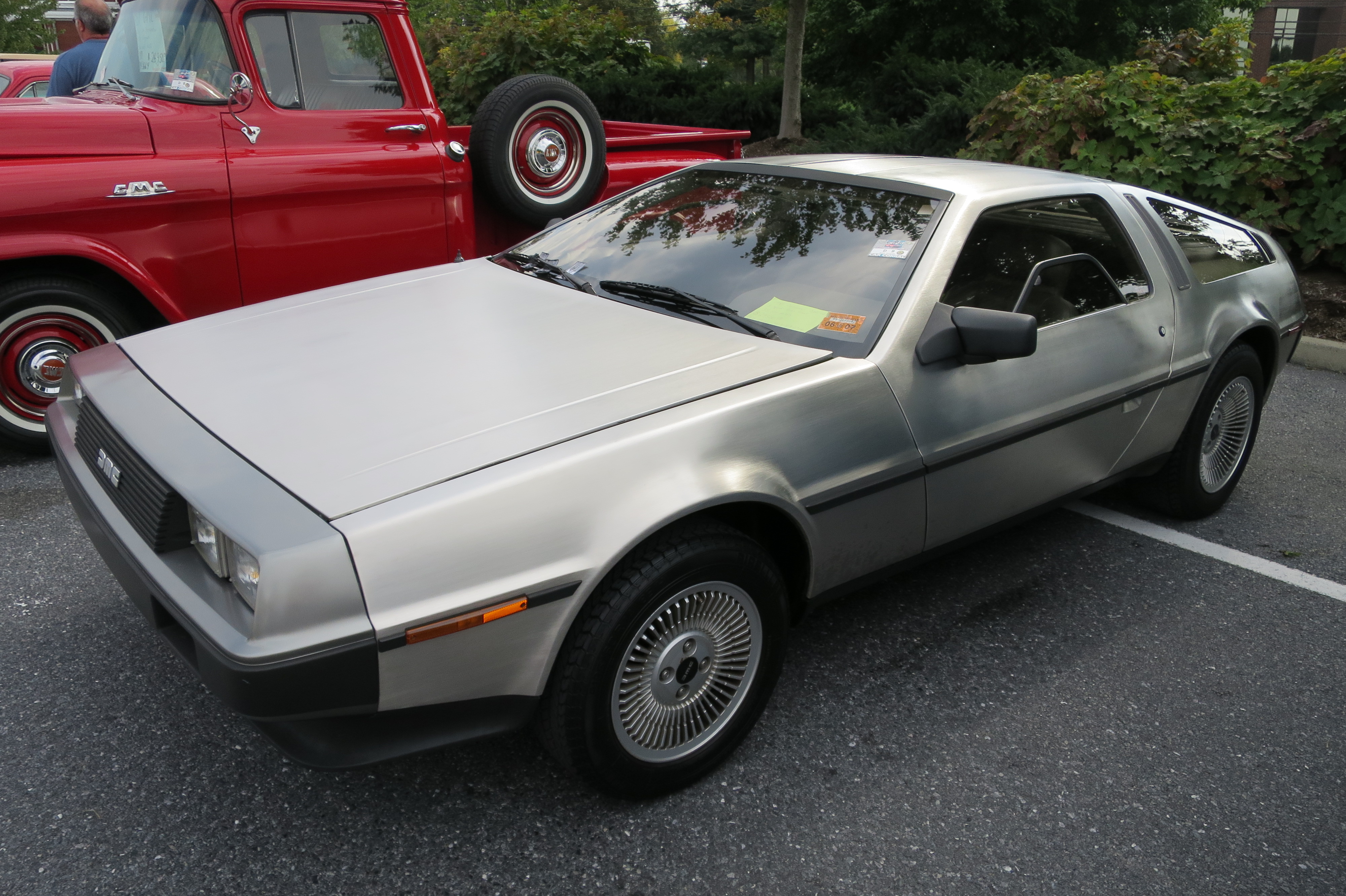Classic Car History: The Delorean
Posted by Jil McIntosh on Sep 29th 2020
If it hadn’t been selected as Marty McFly’s time-travel ride in Back to the Future, the DeLorean might well have ended up as just an automotive history footnote. Instead, it’s firmly a part of pop culture, quite an accomplishment for a car that was only built for two years.
Armed with degrees in mechanical and automotive engineering, John DeLorean started out with Packard and then joined Pontiac in 1956. After he became its chief engineer, he famously dropped a big V8 into the compact Tempest to create the GTO.
He’d always been a rebel, and although it looked like he was on his way to becoming GM’s president, he left in 1973 with plans to build a sports car of his own.
Well-liked by people outside of GM’s top brass – most of whom didn’t care for his nonconformist attitude – he got 345 dealers to throw in $25,000 each, along with financing from banks and private investors.
He assembled a team that included executives from GM, Chrysler, Jaguar, and Aston Martin. The car was designed by William Collins, a former Pontiac engineer, and an Italian coachbuilder made a prototype in 1976. DeLorean looked for a place that wanted jobs in return for tax breaks and investment and discovered it in Belfast, North Ireland.
Instead of a frame, the original design had a revolutionary substructure made of fiberglass and plastic. It was too expensive to put into production, and DeLorean asked Colin Chapman, founder of Lotus, who designed a “backbone” steel frame for it.

The car was originally meant to have a rotary engine, but DeLorean eventually had to go to France’s Peugeot-Renault-Volvo, which supplied a 2.8-litre V-6, equipped with fuel injection and making 130 horsepower. It was a small engine in a heavy machine, and the result wasn’t all that sporty for a sports car.
The venture suffered many of the same issues Malcolm Bricklin did when he attempted his similarly-styled (but unrelated) Bricklin in Canada a few years prior. The DeLorean’s gullwing doors didn’t always work properly, and it was hard to fit the body panels. DeLorean himself was usually in the U.S. and spent very little time at the factory.
The cars were supposed to go on sale in 1979, but production didn’t start until 1981. They were expensive, too: $26,175 the first year, and $29,825 for 1982, although dealers soon started slashing prices when the cars didn’t sell.
It takes an almost unbelievable amount of cash to design and engineer a car, get a factory up and running, and get the thing built. As with many small auto ventures, DeLorean was underfunded, and rapidly burning through the cash he had.

He set up a complicated stock issue for $27 million, but it had to be cancelled. He then appealed to the British government, which had already invested $138 million in the project, and which refused anything more unless DeLorean could raise an equal amount from his investors. He couldn’t, and the company went into receivership.
On October 18, 1982, the British government announced it would close the plant. The following day, DeLorean was arrested in Los Angeles in a sting operation, accused of attempted trafficking of 55 pounds of cocaine. The general consensus was that the profits, estimated at $50 million, were to fund his car. He was later acquitted of that charge, and of subsequent charges of fraud and tax evasion. He died in 2005, and there’s a DeLorean on his bronze grave marker.
About 9,000 DeLoreans were built for 1981 and 1982. The famous flux-capacitor-powered one appeared in the movie just three years after the company folded, sealing the stainless-steel car’s place in auto history.
Here are some other interesting tidbits about the DeLorean…
- The car wasn’t actually made of stainless steel. It was a thin skin over fiberglass body panels. While the unpainted surface made the car unmistakable, owners complained about how quickly it got dirty, and how tough it was to clean off any fingerprints.
- The DeLorean had a NHTSA safety recall, for the possible failure of a shut-off switch that would continue to send fuel to the engine after a crash. The company also issued two recalls of its own, to replace a nut that held the ball joint together, and for water drainage that could freeze the throttle cable in winter.
- In his last years at GM, DeLorean openly criticized its vehicle quality and its executives. After he left, he collaborated on a tell-all book with writer J. Patrick Wright. Released in 1979 and titled On a Clear Day You Can See General Motors, it sold 1.6 million copies.

- DeLorean’s drug bust wasn’t the only scandal. British investigators traced £15 million in investor funding diverted to Colin Chapman, whose Lotus firm was in financial difficulty. The cash went to a Swiss-based, Panama-registered company created by Chapman and Fred Bushell, Lotus’ financial director. John DeLorean was named a co-conspirator. Chapman died before the trial, and DeLorean did not return to the U.K. on the charges, but Bushell went to prison for three years.
While DeLoreans are rare, they are out there, and they draw considerable crowds at shows. More parts were made than cars were built, and there are a lot of clubs and information to keep a DeLorean on the road – now, and “back in the future” too.
As the experts in automobile restoration supplies, including vintage car parts for your project car, we can help you find the auto parts you need. Start your restoration off right and get the classic car parts you need to make your dream car a reality. Contact Collectors Auto Supply online or call us at 1-800-414-4462.
